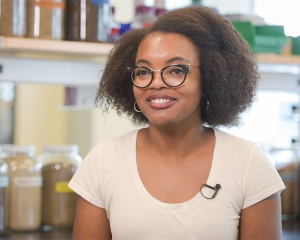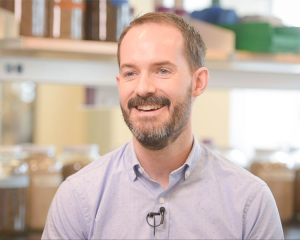Two researchers from the University of Houston have received a grant to study the potential water conservation savings for different types of land uses in the City of Houston.
Dr. Devin Shaffer, an assistant professor in the Civil and Environmental Engineering Department, will oversee the work done by his doctoral student, Dana Reed, in developing a model for water use and water conservation based on land use. In a competitive grant process, their proposal was selected by the Harris-Galveston Subsidence District (HGSD). The grant is for $24,228.
Last fall, Shaffer and Reed joined delegates from the HGSD and from Houston Public Works at the One Water Summit, which focused on using tools like conservation and reuse to manage water resources in an integrated way.
“This is the first year of the water conservation grant program from the HGSD,” Shaffer said. “We learned about it from the district and from Houston Public Works, and we thought it was really a good opportunity for us to build on ideas that we had heard and discussed at the One Water Summit.”
“We're really just trying to inspire people to see water as valuable every step of the way,” Reed said.
The model developed by the pair will combine land use and water use data to understand how water is used by various properties in the area. They will be working closely with the City of Houston to gather data about residential water use per parcel. They also chose a study area that overlaps with the wastewater collection area for one of the city's wastewater treatment plants.
This study area allows them to use flow data from the wastewater collection system to understand how much water is used outdoors for activities like watering the lawn compared to how much water is used indoors. Water used indoors ultimately drains into the wastewater collection system and can be estimated from wastewater flow data.
“We're trying to model who's living and working in this area, and how they are using water,” Reed said. “If we can understand how water is being used in the area, we can target conservation practices that will save as much water as possible.”
For Dr. Tina Petersen, the deputy general manager of the HGSD, the model is a way to learn more about best practices for water management.
“The Subsidence District is interested in this project because it will provide verification of potential water savings based on different water conservation scenarios,” she said in a statement about the grant. “We also were intrigued by the innovative use of wastewater flow measurements to calibrate the land-use based water model. We are looking forward to learning more about the type of water conservation best management practices from this study.”
The Houston area has unique water issues, Reed and Shaffer said. While it rains frequently, and there are numerous lakes and rivers in the region, groundwater still needs to be drawn from underground aquifers to help meet the City’s water needs. This groundwater withdrawal can cause the aquifers to compact over time, Shaffer said.
“Land subsidence from aquifer compaction can cause problems with flooding from rainstorms and hurricanes,” he said. “Water that we can save from conservation can help reduce subsidence because it’s water that's not drawn from the aquifer.”
Reed noted that the lack of zoning regulations in Houston made it tougher to accurately estimate water usage.
“A lot of cities will have zoning that influences how water is used on a property, which we don't have here, so it's challenging to get a picture of how water is being used,” she said. “An additional challenge is motivating people to conserve water. There is a lot of water in Houston. We get a lot of rain and flooding here, so it can be challenging to get people to understand the benefits of water conservation.”
Shaffer said his professional background, before getting into academia, was working in the water and wastewater industries.
“Before I started my academic career, I worked as an engineer with municipal clients,” he said. “I think it’s exciting and motivating to work on these water resources problems in our local area. There are both challenges and opportunities.”
Likewise, Reed stressed that they hoped their model would discover implementable water conservation strategies.
“I have a background in industry also, and that experience has emphasized for me the importance of conducting research that is practical and applicable,” Reed said. “I think it's exciting to take a look at the real problems here in Houston, so that our solutions can be practical.”
The ultimate goal, Shaffer said, is to develop a model that can used by the City of Houston to get the best return on investment when it comes to water conservation practices.
“For us, this is hopefully the start of a long-term collaboration between UH, the city and the district on regional and local water challenges,” he said.

